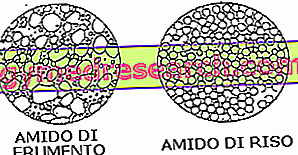ZANTAC ® is a ranitidine hydrochloride drug.
THERAPEUTIC GROUP: Antireflux.
IndicationsAction mechanismStudies and clinical effectiveness Usage and dosage instructionsWarnings Pregnancy and lactationInteractionsContraindicationsUndesirable effects
Indications ZANTAC ® Ranitidine
ZANTAC ® is used in the symptomatic treatment of gastric pyrosis, duodenal and gastric ulcers, reflux esophagitis, dyspepsias, gastritis and duodenitis due to acid hypersecretion.
Mechanism of action ZANTAC ® Ranitidine
Ranitidine hydrochloride, present in ZANTAC ® and taken orally, is rapidly absorbed in the gastro-intestinal tract, reaching its maximum plasma concentration 2-3 hours after its oral administration.
The proportion of the bioavailable active principle is around 50% of the total dose taken, and is mainly eliminated through the renal route.
The therapeutic effect of the drug is due to the ability of ranitidine to selectively inhibit histamine H2 receptors, expressed by the parietal cells of the gastric mucosa and involved in the control of acid secretion induced by histamine and gastrin, with an inhibitory effect that can also be prolonged for 12 hours.
The documented effects highlight the ability of this molecule, synthesized for the first time in the early 1970s, to act selectively on these receptors, guaranteeing an inhibition of both basal and food-induced acid secretion, with a significant drop in the juice volume as well gastric.
Studies carried out and clinical efficacy
1. EFFECTIVENESS OF RANITIDINE TREATMENT
Treatment with 150 mg of ranitidine proved to be effective in treating the symptoms, showing the first therapeutic effects, noticeably evident only after two weeks of treatment. Despite the efficacy in the treatment, the number of relapses following the suspension was decidedly high.
2. RANITIDINE IN COMBINATION, RAPIDITY OF ACTION
The concomitant administration of ranitidine and effervescent antacids proved to be particularly useful, in rapidly increasing the intragastric pH, with values above 3 - 4 in about 30 seconds. This combination could be particularly important in the early treatment of heartburn and acute reflux episodes.
3. RANITIDINE AND BREAST CANCER
Therapy with histamine H2 receptor antagonists has, among possible side effects, an increase in prolactin concentrations. This hormone has been associated with an increased risk of developing breast cancer in the post-menopausal period. We then evaluated the possible correlation between ranitidine intake and breast cancer development, fortunately without any statistical evidence, despite the increased expression of receptors involved in the genesis of the tumor pathology.
Method of use and dosage
ZANTAC ® 75/150/300 mg ranitidine hydrochloride tablets, 150 ml syrup of ranitidine hydrochloride per 10 ml of product:
we recommend taking 1 - 2 tablets of 75 mg a day or 1 tablet of 150 mg a day, regardless of meals. As for the syrup formulation, the recommended dose is two 10ml scoops, equal to 300 mg daily, to be taken in the morning and evening.
It would be preferable to start taking after the first symptoms appear.
The aforementioned doses can be subject to both quantitative and temporal changes, even important ones, in the case of particular clinical conditions, characterized by advanced pathologies, or in case of reduced renal function.
Therefore it is necessary to take this medicine under strict medical supervision.
Warnings ZANTAC ® Ranitidine
Given the renal excretion of ranitidine, administration of ZANTAC ® should be done with particular care, and under close medical supervision, in patients with reduced kidney function.
The antihistamine effects related to H2 receptor inhibition could mask the symptoms associated with stomach carcinoma, delaying diagnosis.
Careful medical supervision should also be necessary in patients with peptic ulcer and anti-inflammatory therapy and patients with serious disorders of the gastro-enteric system.
The presence of dizziness and headache, following the intake of ZANTAC ® , could reduce the patient's normal perceptive capacities, making driving of vehicles and the use of machinery dangerous.
PREGNANCY AND BREASTFEEDING
The absence of useful studies to characterize the safety profile of this active ingredient when taken during pregnancy, on the health of the unborn child and of the pregnant woman, severely limits its use during pregnancy.
Furthermore, the capacity of ranitidine contained in ZANTAC ® to be excreted directly in breast milk, also prevents it from being taken during pregnancy, or forces it to be suspended during the therapeutic procedure.
Interactions
Although ranitidine is able to partially inhibit the activity of the cytochrome CYP450 enzyme, studies show that doses normally used in clinical settings do not manifest significant alterations due to the active principles metabolised by the same enzyme.
In contrast, the absorption of drugs that require low pH could be reduced by the concomitant administration of ranitidine hydrochloride.
High doses of sucralfate, could instead inhibit the absorption of ranitidine.
Contraindications ZANTAC ® Ranitidine
ZANTAC ® is contraindicated in case of known hypersensitivity to one of its components and during pregnancy and lactation.
Undesirable effects - Side effects
Clinical trials and post-marketing research have described side effects that are usually rare and limited to the treatment period.
Among these we observed the presence of alterations in the plasma transaminase values, accompanied by reduced liver function, pan cytopenia, headache and dizziness, mental confusion and depression in elderly or predisposed patients, hyperprolactinemia, alterations in heart rhythm, hypotension, impotence, atralgia and myalgine.
Rare cases of allergic reactions with mostly dermatological symptoms have also been described.
Note
ZANTAC ® a drug sold only under medical prescription.



